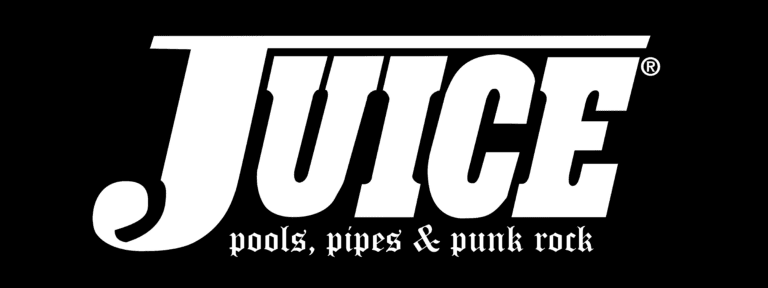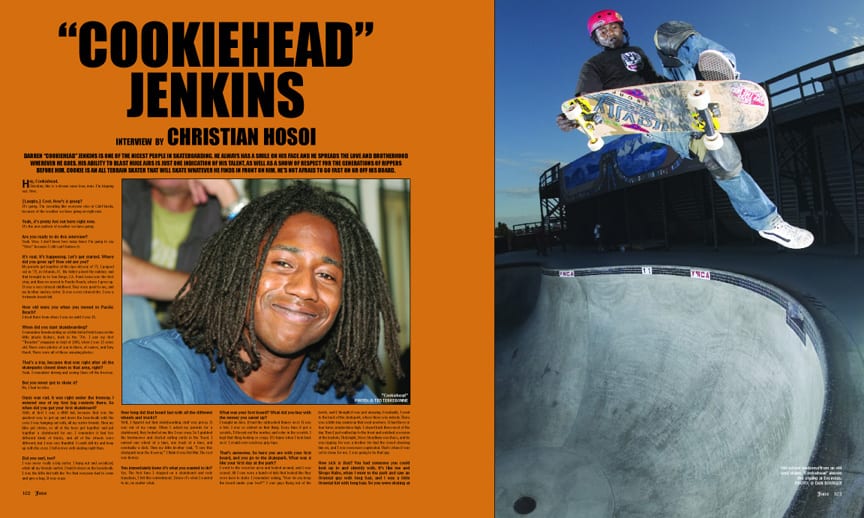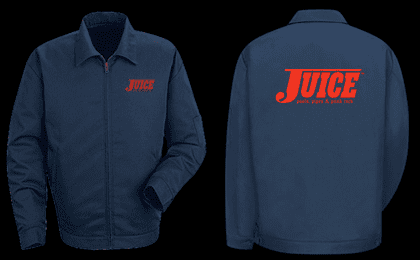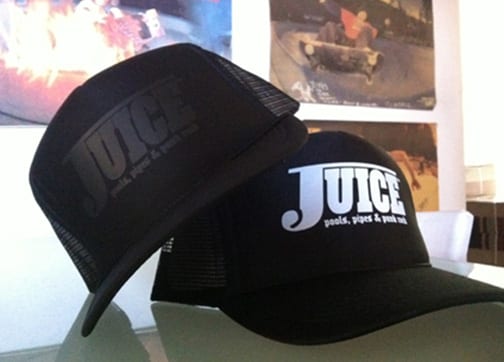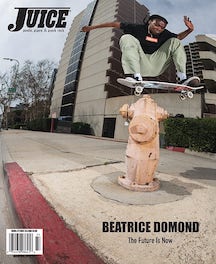INTERVIEW BY CHRISTIAN HOSOI
INTRODUCTION BY DAN LEVY
PHOTOS BY TED TERREBONNE and DAN BOURQUI
Darren “Cookiehead” Jenkins is one of the nicest people in skateboarding. he always has a smile on his face and he spreads the love and brotherhood wherever he goes. His ability to blast huge airs is just one indication of his talent, as well as a show of respect for the generations of rippers before him. cookie is an all terrain skater that will skate whatever he finds in front on him. He’s not afraid to go fast on or off his board.
“THE FIRST TIME I STEPPED ON A SKATEBOARD AND RODE TRANSITION, I JUST FELT THIS CONTENTMENT. I KNEW THAT’S WHAT I WANTED TO DO NO MATTER WHAT.”
Hey, Cookiehead.
Christian, this is a dream come true, man. I’m tripping out. Wow.
[Laughs.] Cool. How’s it going?
It’s going. I’m sweating like everyone else in Cali-Florida, because of the weather we have going on right now.
Yeah, it’s pretty hot out here right now.
It’s the new pattern of weather we have going.
Are you ready to do this interview?
Yeah. Wow. I don’t know how many times I’m going to say “Wow” because I still can’t believe it.
It’s real. It’s happening. Let’s get started. Where did you grow up? How old are you?
My parents got together at the ripe old year of ’71. I popped out in ’72, in Orlando, FL. My father joined the military and that brought us to San Diego, CA. Point Loma was the first stop, and then we moved to Pacific Beach, where I grew up. It was a very relaxed childhood. They were good to me, and my brother and my sister. It was a very relaxed life. I was a fortunate beach kid.
How old were you when you moved to Pacific Beach?
I lived there from when I was six until I was 15.
When did you start skateboarding?
I remember kneeboarding as a little kid in Point Loma on the little plastic kickers, back in the ’70s. I saw my first “Thrasher” magazine in Sept of 1985, when I was 12 years old. There were photos of you in there, of course, and Tony Hawk. There were all of these amazing photos.
That’s a trip, because that was right after all the skateparks closed down in that area, right?
Yeah. I remember driving and seeing Oasis off the freeway.
But you never got to skate it?
No, I had no idea.
Oasis was rad. It was right under the freeway. I entered one of my first big contests there. So when did you get your first skateboard?
Well, at first I was a BMX kid, because that was the quickest way to get up and down the boardwalk with the crew I was hanging out with, all my surfer friends. Then my bike got stolen, so all of the boys got together and put together a skateboard for me. I remember it had two different kinds of trucks, and all of the wheels were different, but I was very thankful. I could still try and keep up with the crew. I fell in love with skating right then.
Did you surf, too?
I was never really a big surfer. I hung out and socialized, while all my friends surfed. I held it down on the boardwalk. I was the little kid with the ‘fro that everyone had to come and give a hug. It was crazy.
How long did that board last with all the different wheels and trucks?
Well, I figured out that skateboarding stuff was pricey. It was out of my range. When I asked my parents for a skateboard, they looked at me like I was crazy. So I grabbed the lawnmower and started cutting yards in the ‘hood. I earned one wheel at a time, one truck at a time, and eventually a deck. Then my little brother said, “I saw this skatepark near the freeway.” I think it was Del Mar. The rest was history.
You immediately knew it’s what you wanted to do?
Yes. The first time I stepped on a skateboard and rode transition, I felt this contentment. I knew it’s what I wanted to do, no matter what.
What was your first board? What did you buy with the money you saved up?
I bought an Alva. It had the airbrushed flames on it. It was a fish. I was so stoked on that thing. Every time it got a scratch, I’d break out the marker, and color in the scratch. I kept that thing looking so crispy. It’s funny when I look back on it. I would even wash my grip tape.
That’s awesome. So here you are with your first board, and you go to the skatepark. What was it like your first day at the park?
I went to the reservoir area and looked around, and I was scared. All I saw were a bunch of kids that looked like they were born to skate. I remember asking, “How do you keep the board under your feet?” I saw guys flying out of the bowls, and I thought it was just amazing. Eventually, I went to the back of the skatepark, where there was nobody. There was a little tiny snakerun that went nowhere. It had three or four turns, maybe knee high. I stayed back there most of the day. Then I just walked up to the front and watched a session at the keyhole. That night, Steve Steadham was there, and he was ripping. He was a brother. He had the crowd cheering him on, and I was even more captivated. That’s when it was set in stone for me. I was going to be that guy.
How sick is that? You had someone you could look up to and identify with. It’s like me and Shogo Kubo, when I went to the park and saw an Oriental guy with long hair, and I was a little Oriental kid with long hair. So you were skating at Del Mar. How long did it take you before you were doing what you’re doing now?
I was one of those stubborn kids. It came hard for me. I can’t say I was a natural at it. I just worked very hard. I had great influences. I grew up skating around Jason Rogers, who has incredible talent. He could hold it down on any terrain, and still does. We had incredible influences at the park. We still got to enjoy two years of the park, so I got to make friends with Reese Simpson and Josh Nelson. I bought stickers from Dave Swift and Tod Swank back in the day. Just being around those guys was great. Jason Jessee was there. I remember you coming to the park and competing and having sessions. Getting a couple of years of that in my veins before Del Mar closed down really cemented the discipline in me not to stop. It took a while. It was probably ’89 or ’90, when I started doing airs. I 50-50ed into everything. I 50-50ed into my first 540.
[Laughs.] When did you do your first 540?
It was in ’89 at Linda Vista Skatepark at the Boys Club. That was our hang out. That was our park. It was funny, because that was the ramp that you won on. I’ll never forget that. I paid my admission to skate at the Irvine Skate Escape. I was there cheering you on in the crowd. The hottest thing was when people booed and you gave them props. You were like, “This is great. Thanks to everyone for coming out. And thanks to the booers.” That was so hot. I was like, “This dude is rad.”
[Laughs.] That was definitely a good ramp, and a good time. So that was your local spot after Del Mar closed?
Yes, sir.
That’s where you learned all of the tricks that you’re doing today?
Pretty much. Then I was fortunate enough to be a part of the H-Street revolution. I got to ride Magnusson’s ramp in his backyard. Just being an amateur with that fire back then, gave us access to a lot of ramps. I remember coming up to your ramp in Hollywood with Jordan Richter and those guys. I wouldn’t have been able to do something like that if I was just Joe Schmo.
When did you start entering competitions?
I started entering CASL (California Amateur Skateboard League) contests about a year and half after I started skateboarding. It was probably around 1986. I was reading a magazine and saw the CASL schedule. I got a hold of Jason, and everyone got psyched. Then my mom drove us to Oceanside to register. The whole way back, she was like, “That was really far. Are you sure you’re going to go all the way back there just for a skateboard contest?” I was like, “Yes, yes, yes!” We were all like, “That was amazing. We’re registered. We’re in!”
[Laughs.]
It was a street contest at the pier. I did horrible, but it was so fun to be around all of these other skaters.
When did you first get sponsored? Did you go from a shop sponsor to a company sponsor?
Yeah, back in the day, that’s how we had to do it. There was a shop called Skate Systems and all the boys came up through that shop. From there, we all got sponsored by real companies. Peter Hewitt, who I was fortunate enough to grow up skating with, was on Santa Cruz and Indy. He had all of these amazing sponsors. Then everyone else started getting picked up. At one contest, they let me enter under Skate Systems. They all felt that I was good enough to enter under the shop.
So you qualified?
Yeah, I actually got second place in the shop-sponsored division. I was walking back to the car with my mom and Sarge Carter tapped me on the shoulder. He said, “I’m with Tracker Trucks. I saw you skating. Would you like to try out some trucks?” I was looking at my mom, like, “Do you know this guy?” I couldn’t believe it. Then H-Street was shortly after that. From there, it was just like a dream.
H-Street was your first board sponsor?
Yeah. Alfonso Rawls, bless his heart, was on H-Street. All the boys were at the park, like Ternasky and Mag. Alfonso had put in a good word for me. He told them that they should take a look at me and give me a shot. Sure enough, H-Street sent me a package, along with the Tracker trucks. I was blown away.
You were hooked up and on the team?
Yes, sir. It was amazing.
So from one contest, you were on the team?
Yeah. It took a lot of work.
Were there any other contests that came up shortly after that?
The NSA series was alive and well, and I was fortunate enough to compete in the NSA district competitions. It was all of the hottest guys from the district competing against each other. Then it was the regionals. From the regionals, it was East versus West, and then it was the finals. You had to come up like that. It was a great way to go. There was a lot of discipline, and it was a lot of fun. It was great to grow up with those guys, and then to see everyone make it.
Who was your competition back then?
There was Jordan Richter, Fred Alande and Danny Way. Danny was light years ahead of us. It was a pleasure growing up skating with Danny. Of course, Jason Rogers, Omar Hassan, Peter Hewitt and the Schroeder brothers were there. It was always cool to see the Schroeder brothers, because we’d look forward to seeing them destructing something at a contest. They were huge monolith-type guys, even though they were still teenagers.
Do you remember who beat you in your first contest?
John John Bryan.
Was he a local?
No, he was from Orange County, and he did some giant airs. He was a really cool guy. He went through the sponsorship thing. He was a very talented skater. Then, as you can attest to, when the ’90s came on, there was a whole about face in skateboarding. If you were riding anything big, or riding tranny or vert, you were looked at like you were from outer space. It was getting very street tech with small wheels. That’s when World Industries came in and shook things up.
It became very clique-y back then.
Yeah, if you weren’t down with the right crew, it was like, “What are you doing?” It turned a lot of people off. I never considered myself a quitter, but when it got really heated, I took a couple of years away from the sport. I took a couple of steps back. I had a lot of hopes and dreams that just went “poof.” They were just gone.
They pulled the rug right out from under you?
Pretty much.
I went through it myself, so I know what you’re talking about. Did you stop skateboarding, or did you just stop competing?
I stopped competing at first, and then I just didn’t really want to ride around the guys that I’d always been riding with. It was real clique-y. If you weren’t doing this certain thing, wearing this certain thing, and acting this certain way, you weren’t in.
The small wheels came in.
It was like a tidal wave or a tsunami. We were all on the beach, just chilling and this tsunami just bopped us.
[Laughs.] Did you start skating street?
Yeah, I did. I put my time in. I put work in. I searched out the rails. I slid my share of double kinks. I was fortunate enough to get a gap named after me: the “Cookiehead” gap in San Diego. At the time, my mouth, unfortunately, wrote me a check that I had to cash. I’d been saying, “I’m going to ollie that one day.” Then basically, we all drove by with the crew, my mouth opened, and they hit the brakes. They were like, “Okay. Let’s do this.”
Put your money where your mouth is, right?
Yeah. It was 12 feet down and 18 feet out. At the time, it was a fantasy to me to do it. So I had to do it. I took a couple of good slams, and then I made it.
So after you took a couple of years off from skateboarding. What made you come back?
Unfortunately, it was the tragic passing of Mike Ternasky, who was like a father to me, at a point when I really needed that fatherly support. He was the backbone of H Street. He assembled the guys and came up with these tricks. He may not have been the best skater, but he could make you the best skater.
I heard he was very inspiring and had a big focus on what he set out to do with H Street. After I became a Christian, I heard that he was doing Bible studies with the guys on the team.
Yes. Before his passing, he was very religious. He’d found the righteous path. He was a gift to all of us.
I had the opportunity to meet him and hang out with him, here and there.
He spoke highly of you.
He was just a gentle guy. He was a humble guy. I could tell that he was really genuine and sincere. I got to hang out with him for a little while. After he passed, I saw what an effect it had on everybody. I was living in the fast lane at the time; so to stop and evaluate everything was hard for me. When I saw how it affected the guys on the team, I was really impressed by how much of an impact he had made on all your lives.
It was deep, Christian. He meant so much to all of us. Colin McKay and Sluggo would come around and skate. They were incredible skaters. It was just an honor to be around all of those guys and to skate with them. I have to give those guys a shout out of love for always looking out for me. We all were together at the funeral. That was the first time I’d seen everyone in almost two years. It was a very emotional time. It brought me straight to the reality that skateboarding was where I belonged. These were my people. This is what I need to never walk away from again. So I started over from scratch in ’95, and here I am.
FOR THE REST OF THE STORY, ORDER ISSUE #61 BY CLICKING HERE…
SHARE THIS POST:
- Click to email a link to a friend (Opens in new window)
- Click to share on Tumblr (Opens in new window)
- Click to share on LinkedIn (Opens in new window)
- Click to share on Pinterest (Opens in new window)
- Click to share on Twitter (Opens in new window)
- Click to share on Facebook (Opens in new window)
- Click to share on Reddit (Opens in new window)
- Click to print (Opens in new window)
